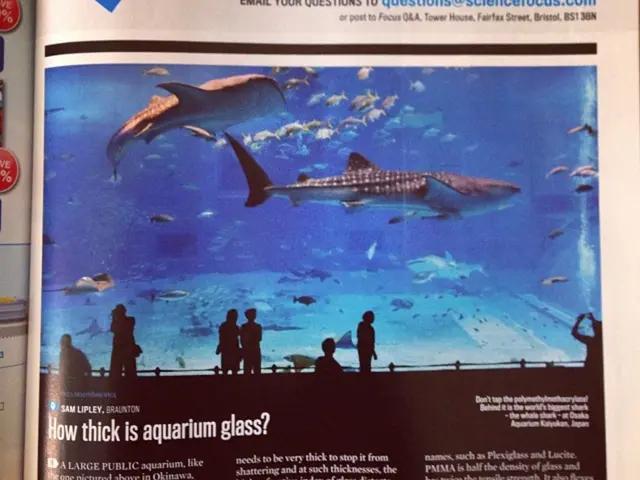Limits to Carbon Storage: Debunking the Myth of Unlimited Accumulation
The publication "A prudent planetary limit for geologic carbon storage" in Nature has revised the estimate for global carbon storage capacity, suggesting a significantly lower figure than previous estimates. The new estimate stands at approximately 1,460 gigatons of CO2, which is about 90% less than what was previously thought.
This new estimate has implications for climate change mitigation strategies, as most 2°C pathways already use up to 2,000 gigatons of storage this century. The overshoot of the prudent ceiling raises concerns, suggesting that relying on gigaton-scale storage for centuries may not be a credible strategy under the prudent limit established by the study.
The study focuses on sedimentary basins for carbon storage, excluding other sequestration pathways like mineralization, carbonation of ultramafic rocks, and injection into industrial waste streams or mine tailings. The authors consider these excluded methods to be at pilot scale, with uncertain scalability and little real-world data.
The United States, Russia, Saudi Arabia, and Australia retain significant safe storage potential after these exclusions are applied. However, countries like Indonesia and Brazil may have strong storage potential but little historic responsibility for emissions, which complicates incentives. Europe, with high historic emissions but weak remaining storage, will need to import storage or lean harder on alternatives.
The authors of the study suggest that policymakers should treat carbon storage as a budget to be managed, not a get-out-of-jail card. They emphasize the need for front-loading emissions reductions and accelerating electrification. CCS (Carbon Capture and Storage) should not be built out as a general-purpose rescue plan for coal and gas, but reserved for the hardest to abate industrial point sources such as cement kilns and some steel production.
The study also acknowledges the hazards associated with dense pipeline networks in populated regions, setting a 25 km urban buffer to mitigate risks. The new research underscores the need for global agreements that treat storage as a limited intergenerational resource rather than a private commodity.
Real projects such as cement CCS in Norway are already delivering capture costs in the range of €120 to €150 per ton. Other carbon sinks, such as long-lived biogenic products like mass timber, soil carbon improvements, and forest conservation, become more important to reduce dependence on the finite subsurface budget.
Regions with robust storage potential after risk screening may find themselves offering storage as a service to others, raising questions of distributive justice, liability, and fairness. The new estimate has implications for climate change mitigation strategies, emphasizing the need for careful rationing of storage and a focus on front-loading emissions reductions and accelerating electrification. Net zero by mid-century followed by rapid drawdown remains possible, but only if these measures are implemented effectively.
Read also:
- Lu Shiow-yen's Challenging Position as Chair of the Chinese Nationalist Party (KMT) Under Scrutiny in Donovan's Analysis
- Berlin's Roma-Sinti communities asserting their presence in German theatrical arenas
- Love missive penned by Ali Chahrour addresses turbulent Beirut city
- "The concept of 'corporate feudalism' is not viable"








